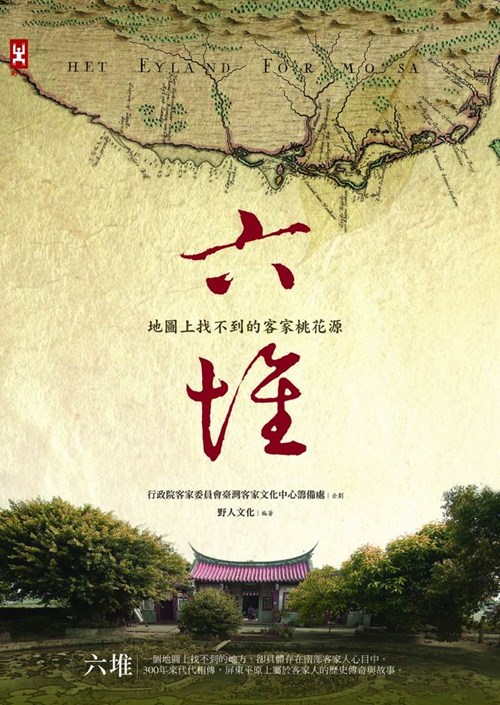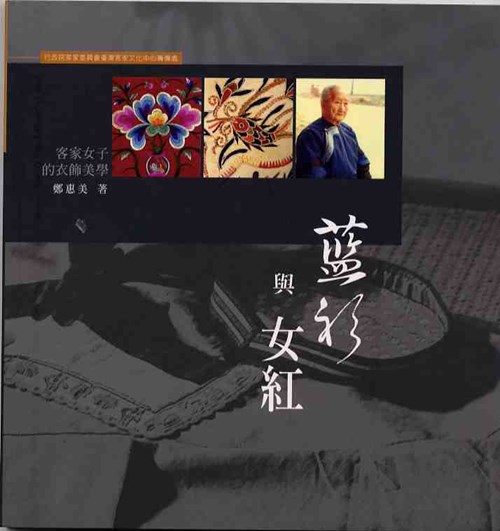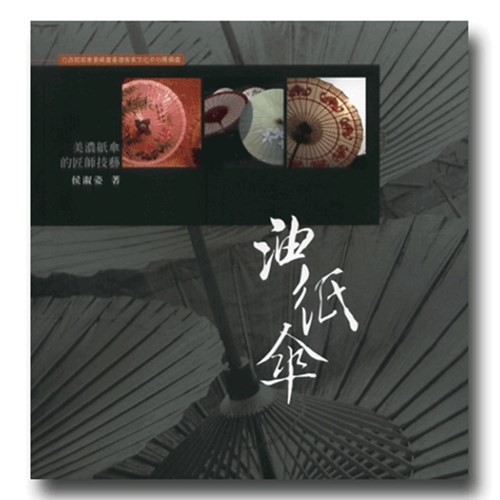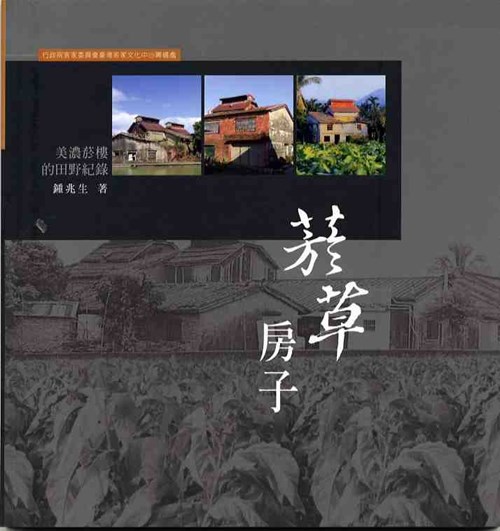
Research & Library
Publications

-
![]()
The Hidden Hakka Arcadia — Liudui (Second Print)
Publication Date:Authors: Huang, Rui-fang, Zeng, Kun-yu, and Zeng, Zhao-xiongPublication Date: July 2007Liugdui, an undiscovered place on any map, yet lives vividly in the hearts of Hakka people in southern Taiwan, and also it is a historical legend and a living story that has been passed down along the Pingtung Plain by the Kaoping River for over three centuries.Liugdui is not in the name of the administrative districts but rather a symbol of unity and shared identity, representing the collective strength of Hakka communities in southern Taiwan. Liugdui refers to the Six Divisions, namely the Front Dui, Rear Dui, Left Dui, Right Dui, Central Dui, and Vanguard Dui, each representing one of the six historical divisions that together formed the Liugdui Hakka community. They correspond respectively to today’s Linluo and Changzhi (Front Dui); Neipu (Rear Dui); Jiadong and Xinpi (Left Dui); Meinong, Gaoshu, Jiaxian, Shanlin, and Liugui (Right Dui); Zhutan (Central Dui); and Wanluan (Vanguard Dui). In modern times, Liugdui has come to signify not only a Hakka homeland but also a shared cultural community that embraces all the peoples who live within it.What makes it so special? the main reason visitors should come is thatIn Meinong, one can leisurely ride a bicycle through a tranquil townscape imbued with rustic charm. In Jiadong, visitors can admire the grandeur of the Hsiao Family Residence and the Tai-ji Liang-yi Pond—the only surviving example of its kind in Taiwan—before the Yang Clan Ancestral Hall. In Neipu, one finds the Changli Temple, dedicated to Han Yu (768–824), the only shrine in Taiwan honoring the great Tang Confucian scholar. And in Wanluan, no visit is complete without savoring the region’s famed Wanluan Pork Knuckles, known for their chewy texture and rich flavor.This is the first comprehensive cultural travel guide to Liugdui, presenting the beauty of southern Taiwan’s Hakka world through rich historical and ethnographic insight. The book also includes a supplementary booklet, Themed Journeys through Liugdui, highlighting local cuisine, heritage, and attractions through a series of curated travel themes.
-
![]()
Hakka Living Museum Series, Vol. 1 – Hakka Blue Garments and Women’s Needlework
Publication Date:Author: Cheng, Hui-Mei Publication Date: December 2006 The Hakka Living Museum Series is a collection of works based on extensive field investigations and ethnographic documentation of Hakka culture. Initiated by the Preparatory Office of the Taiwan Hakka Cultural Center, Council for Hakka Affairs, Executive Yuan, this series aims to preserve and promote Hakka heritage by selecting themes that resonate with the general public. Topics include familiar aspects of daily life such as “Blue Garments,” “Oil-Paper Umbrellas,” and “Pottery Kilns” (representing Hakka crafts), as well as “Tobacco Curing Barn,” “Rice Milling Workshop,” and “Irrigation Canals” (representing industrial and agricultural heritage sites). Each volume invites scholars to reorganize and interpret their long-term field research, enriched with abundant photographic materials, in order to illuminate the living experiences and wisdom of the Hakka people. In this work, the author brings together unprecedented visual materials from public institutions and private collections in Taiwan, offering a comprehensive portrayal of the traditional Hakka woman’s blue garments and embroidered works—those prepared for everyday life, marriage, childbirth, and old age. It vividly reflects both the customs of Hakka daily life and the aesthetic sensibilities embodied in Hakka garments and needlework.
-
![]()
Hakka Living Museum Series, Vol. 3 – The Oil-Paper Umbrellas
Publication Date:Author: Hou, Lulu Shur-tzyPublication Date: December 2006The Hakka Living Museum Series is a collection of works based on extensive field investigations and ethnographic documentation of Hakka culture. Initiated by the Preparatory Office of the Taiwan Hakka Cultural Center, Council for Hakka Affairs, Executive Yuan, this series aims to preserve and promote Hakka heritage by selecting themes that resonate with the general public. Topics include familiar aspects of daily life such as “Blue Garments,” “Oil-Paper Umbrellas,” and “Pottery Kilns” (representing Hakka crafts), as well as “Tobacco Curing Barn,” “Rice Milling Workshop,” and “Irrigation Canals” (representing industrial and agricultural heritage sites). Each volume invites scholars to reorganize and interpret their long-term field research, enriched with abundant photographic materials, in order to illuminate the living experiences and wisdom of the Hakka people.In Hakka culture, the oil paper umbrellas, whose name (油紙 in Hakka pronunciation) sound similar to “having sons” (iuˇ ziiˋ,有子), symbolizes fertility and the wish for a prosperous family lineage. This work traces how the umbrella evolved from a practical everyday object into an art form. Through in-depth interviews with nine umbrella craftmasters from Meinong—each representing a vital link in the transmission of traditional skills—the author documents in detail the handmade techniques of oil paper umbrella craftsmanship, while also examining the historical development, current status quo, and future prospects of this unique cultural industry.
-
![]()
Hakka Living Museum Series, Vol. 2 – The Tobacco Curing Barn
Publication Date:Author: Jhong, Jhao-ShengPublication Date: December 2006The Hakka Living Museum Series is a collection of works based on extensive field investigations and ethnographic documentation of Hakka culture. Initiated by the Preparatory Office of the Taiwan Hakka Cultural Center, Council for Hakka Affairs, Executive Yuan, this series aims to preserve and promote Hakka heritage by selecting themes that resonate with the general public. Topics include familiar aspects of daily life such as “Blue Garments,” “Oil-Paper Umbrellas,” and “Pottery Kilns” (representing Hakka crafts), as well as “Tobacco Curing Barn,” “Rice Milling Workshop,” and “Irrigation Canals” (representing industrial and agricultural heritage sites). Each volume invites scholars to reorganize and interpret their long-term field research, enriched with abundant photographic materials, in order to illuminate the living experiences and wisdom of the Hakka people.This volume focuses on the once-flourishing tobacco industry of Meinong, where more than 400 tobacco curing barns once stood across the landscape. Through on-site research and photographic documentation, the author explores the architectural spaces of these barns, their transformation amid social change, and their significance as repositories of Hakka cultural memory. The book further proposes approaches for heritage preservation and adaptive revitalization of these historically valuable structures.




